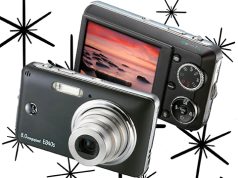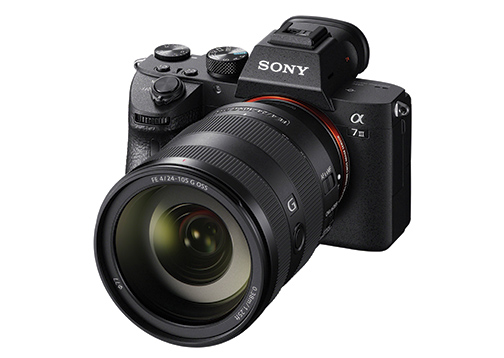
Las Vegas, NV—Sony Electronics announced an addition to its full-frame mirrorless camera lineup—the α7 III (model ILCE-7M3) camera. The interchangeable-lens camera features a brand-new 24.2MP back-illuminated Exmor R CMOS image sensor. The sensor is designed for increased sensitivity, high resolution and 15 stops of dynamic range at low sensitivities.
The new model is aimed at creators from enthusiasts to professionals. Its sensor combines with a variety of advanced features that include extreme autofocus coverage of 93%, 10-frames-per-sec continuous shooting with the mechanical shutter or silent shooting, and 4K video capabilities. In addition, it works with Sony’s 26 native full-frame E-mount lenses.
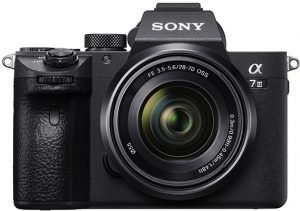
“We are continually pushing to deliver more for our customers, more versatility, more functionality and most importantly, more innovation,” said Neal Manowitz, vice president of Digital Imaging for Sony Electronics. “With the new α7 III, we’ve taken many of our newest and most advanced imaging technologies from the acclaimed α9 and α7R III models and paired them with an all-new 24.2MP back-illuminated sensor to deliver the ultimate full-frame camera for enthusiasts, hobbyists and professionals alike. It’s a camera that punches far above its weight class in every capacity.”
α7 III Full-Frame Image Quality
The new 24.2MP BSI Exmor R CMOS sensor pairs with a front-end LSI to effectively double the sensor’s readout speed. It also combines with an updated Bionz X processing engine that boosts processing speed by approximately 1.8x compared to the α7 II.
The three components work together to enable the camera to shoot at faster speeds while achieving an ISO range of 100–51,200. Moreover, ISO settings are expandable from ISO 50 to 204,800 for still images. As a result, the camera provides an overall 1.5-stop improvement in image quality. 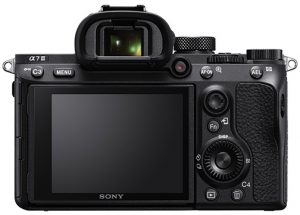 The camera also features a 15-stop dynamic range at low sensitivity settings. This helps ensure overall performance at all settings and in all shooting conditions. Sony claims it also results in “significant advancements in accurate color reproductions of skin tones and the vibrant colors of nature.”
The camera also features a 15-stop dynamic range at low sensitivity settings. This helps ensure overall performance at all settings and in all shooting conditions. Sony claims it also results in “significant advancements in accurate color reproductions of skin tones and the vibrant colors of nature.”
Furthermore, the full-frame camera can output 14-bit RAW files even in silent and continuous shooting modes. In addition, it is equipped with a 5-axis optical image stabilization system to provide a 5-step shutter speed advantage.
Advances in AF Performance
The α7 III also offers improved autofocus (AF) performance from that of the α7 II, including the addition of 4D Focus capabilities. Its AF system has 425 contrast AF points that work with a 693-point focal-plane phase-detection AF system inherited from the α9 camera. The system covers approximately 93% of the frame.
The AF response and tracking also were improved from its predecessor. The α7 III boasts almost two times the focusing speed in low-light conditions as well as twice the tracking speed. As a result, Sony claims “complex and unpredictable motion can be captured with far greater precision and accuracy.”
In addition, an eye-AF feature is available in the new camera. It is accessible even in AF-C mode, which is useful for situations where the subject is turning around, looking down or obstructed. It also works when the α7 III is being used with Sony’s A-mount lenses via the optional LA-EA3 adapter.
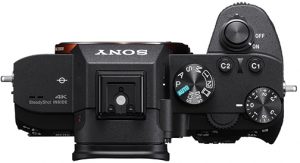
Another improvement in focusing flexibility is the addition of a multi-selector or “joystick” for moving focusing points quickly. Also added are touch-focusing capability, AF availability in focus magnifier mode, and an AF-on button.
Built for Speed
The α7 III also employs an updated image-processing system to allow it to shoot full resolution images at 10 fps with continuous AF/AE (autoexposure) tracking. This maxes out at 177 standard JPEG images, 89 compressed RAW images or 40 uncompressed RAW images. Moreover, the camera can shoot continuously at 8 fps in live-view mode with minimal lag in the viewfinder or LCD screen.
In addition, while large groups of burst images are being written to the memory card, many of the camera’s key functions are operable, including access to the Fn (function) and menu buttons. Image playback and several other menus and parameters that facilitate on-location image sorting are also accessible.
Furthermore, if there is fluorescent or artificial lighting present, users can activate the camera’s anti-flicker function. This permits the α7 III to automatically detect the frequency of the lighting to time the shutter to minimize its effect on images being captured. This is said to minimize exposure or color anomalies that can occur at the top and bottom of images shot at high shutter speeds.
α7 III 4K Video Capabilities
The mirrorless camera also offers 4K (3,840×2,160 pixels) video recording across the entire width of its full-frame image sensor. In video mode, it uses full pixel readout without pixel binning to collect about 2.4x the amount of data required for 4K movies. It then oversamples it to produce 4K footage with detail and depth.
Moreover, an HLG (Hybrid Log-Gamma) picture profile is available. The profile supports an instant HDR workflow, allowing HDR (HLG) compatible TVs to playback 4K HDR imagery. Both S-Log2 and S-Log3 are also available for increased color grading flexibility, as is zebra functionality, Gamma Display assist and proxy recording.
In addition, the camera can record Full HD video at 120 fps at up to 100 Mbps. As a result, footage can be reviewed and edited into 4x or 5x slow motion Full HD video files with AF tracking.
Additional α7R III Features
Also notable on the α7R III are dual media slots, with support in one slot for UHS-II SD cards. Users have various options for storing their content in each of the cards. These include separate JPEG/RAW recording, separate still image/movie recording and relay recording. Battery life was also extended, with a CIPA measurement of 710 shots per charge.

In addition, new features include “my menu” functionality, which allows 30 menu items to be registered for instant recall. Users can also apply star ratings to their stills through the camera’s controls for easier playback. Additionally, there are 81 functions that are assignable to 11 custom buttons.
The dust- and moisture-resistant α7 III also incorporates a high-contrast, fast-start XGA OLED Tru-Finder (electronic viewfinder). It has approximately 2.3 million dots for true-to-life reproduction. Standard and high display quality settings are available for the viewfinder as well as the LCD monitor.
Also, the camera is capable of transferring files to a smartphone, tablet, computer or FTP server via Wi-Fi. In addition, it has a SuperSpeed USB 3.1 Gen 1 Type-C terminal. This allows for increased flexibility in power supply and faster transfer during tethered shooting.
The α7 III comes with Sony’s new Imaging Edge software suite, which extends the creative capabilities of the shooting process. From pre- to post-processing, the software provides three PC applications—Remote, Viewer and Edit—for free download. They support live-view PC remote shooting and RAW development.
Moreover, several improvements were implemented in version 1.1. For example, there is a 10% faster data transfer speed for remote shooting from a PC. There is also a 65% improvement in the response speed for RAW image editing.
Pricing & Availability
The Sony α7 III will ship in April. It will have a suggested retail price of about $2,000 for the body. It will retail for $2,200 in a kit with the FE 28–70mm f/3.5–5.6 kit lens. sony.com


